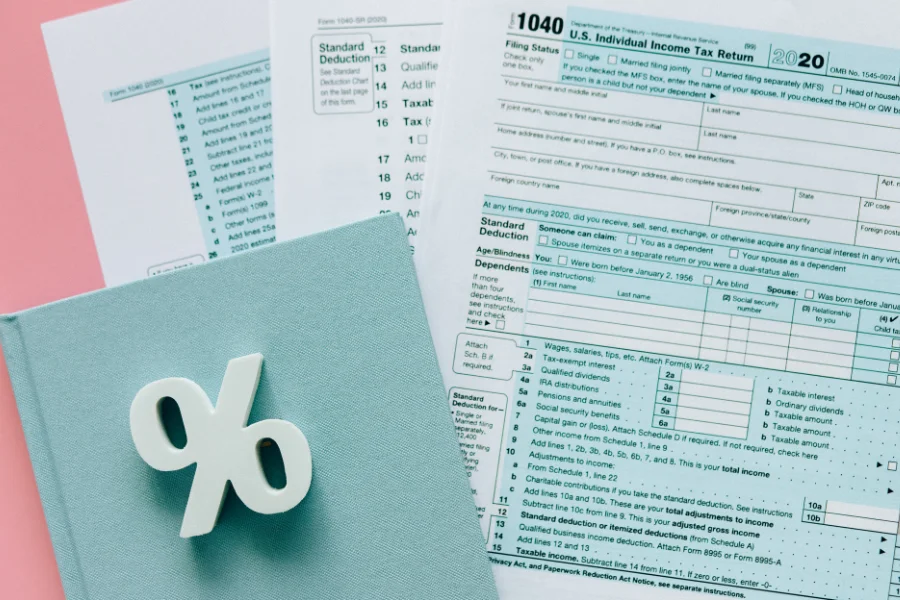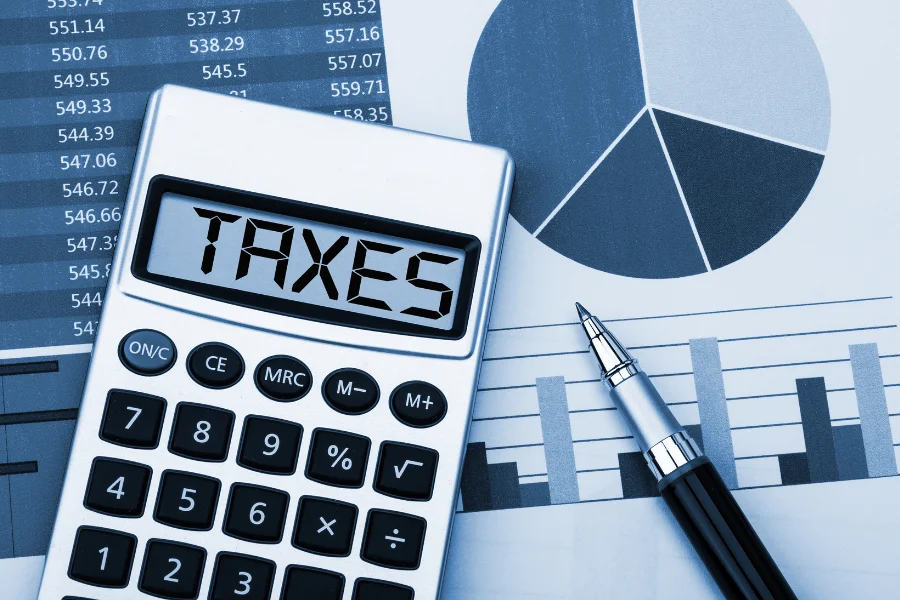Documentary Stamp Tax in the Philippines [Complete Guide in 2025]
Taking care of your civic responsibilities in the Philippines involves paying the Documentary Stamp Tax (DST), which may not be immediately appreciated but is an integral part of document-related transactions.
Formalizing agreements or transferring assets may trigger this levy, so it’s important to understand its effect on your finances. It will become apparent to you as you navigate different dealings, from bank loans to property sales, that the DST has an impact on the costs of these activities, subtly but significantly.
Moreover, staying on top of your tax obligations is more than just compliance; it means making informed decisions that can save you from unnecessary expenses and legal hassles.
Let’s examine how to manage the Documentary Stamp Tax effectively while remaining within the bounds of Philippine tax law by unpacking the layers of the document stamp tax.
Takeaways from the presentation
- There is a Documentary Stamp Tax (DST) in the Philippines, imposed on almost every significant transaction and calculated based on the document type. You can check tax calculator.
- DST must be paid by filing BIR Form 2000, Stamp Tax Declaration Return.
- Penalties may be imposed for non-payment of DST, and documents may not be admissible in court if they are not paid.
- In addition to deeds, bank document charges, and lease agreements, there are different tax rates and requirements for each type of transaction.

Overview Of Documentary Stamp Tax in the Philippines
There are several types of documents subject to Documentary Stamp Tax (DST) in the Philippines, ranging from loan agreements to stock issuances, with rates varying by type.
You are subject to this tax under the National Internal Revenue Code, which affects almost all of your significant transactions.
You must comply with the DST whether you are dealing with real estate transactions, insurance policies, or financial instruments.
It is your responsibility to pay the DST when you accept or sign these taxable documents.
In each document type, the tax base is specified, which can be the property value or the loan amount, or another measurement, depending on the agreement.
The Stamp Tax Declaration Return must be filed using BIR Form No. 2000 within one month of the date the document is issued.
No matter what happens if you don’t pay the DST, your contracts remain valid. However, you might face penalties, and your documents may not be admissible.
Stay compliant by understanding your DST obligations and checking the latest guidelines from the Internal Revenue Service.
Transactions that are applicable
To navigate the complexities of the Documentary Stamp Tax (DST) in the Philippines, you must understand which transactions are subject to the tax.
The DST requirements for deeds, bank documents, and lease agreements are all different.
Here’s how these taxes affect your documents and how they affect your finances.
On Deeds, DST applies
A Documentary Stamp Tax (DST) is imposed on the transfer or sale of real estate in the Philippines. The DST is based on the difference between the actual consideration and the property’s fair market value.
The tax is imposed on the first P1,000 of the value of a deed of sale or conveyance of real property plus 1.5% on the remaining value.
A Documentary Stamp Tax Declaration must be completed and submitted to the Bureau of Internal Revenue, usually using BIR Form 2000.
Depending on the property’s location, a transfer tax or conveyance tax must be paid in order for the transfer to be legal.
Documentary charges for banks
When dealing with loan agreements and financial instruments in the Philippines, it is essential to be aware of the documentary stamp tax on bank documents.
The following information is important:
- In most cases, there is a Documentary Stamp Tax of 0.30% due on loan agreements and papers.
- There is a P1.50 stamp tax on each bank check or draft.
- Documentary Stamp Tax also applies to Certificates of Deposit that bear interest.
Under certain conditions, certain financial documents may be exempt from taxation.
Ensure you use the correct number of documentary stamps for each transaction by checking with the Bureau of Internal Revenue to determine when the Documentary Stamp Tax applies.
Tax on lease agreements
Documentary Stamp Tax applies if you are leasing land or property in the Philippines.
Initially, this tax comes into effect at P3.00, and it increases by P1.00 for every P1,000 or portion thereof that exceeds P2,000.
Lease agreement taxes are taxable transactions you can’t skip. They’re collected at the Revenue District where the contract is located, ensuring compliance with all lease agreements.
When it comes to documentary stamp taxes on lease agreements, there are no exemptions. Make sure you include this cost in your budget so you don’t fall behind on your obligations.
Having a clear understanding of local tax laws is crucial to a smooth transaction.
Tax rate determination
There are various types of documents, transactions, and instruments that are subject to Documentary Stamp Tax (DST) in the Philippines.
Taxes are imposed on documents that facilitate the transfer of property interests or the creation, renewal, or recognition of debts.
The following information is important:
- There is a DST rate applicable to every loan agreement or promissory note. It can vary, so you’ll need to refer to the latest tax code or revenue regulations.
- When dealing with documents related to the sale of real property, the DST is calculated based either on the actual consideration or the fair market value, whichever is higher.
- To avoid any legal issues or penalties, ensure that the stamp tax reflected on your tax return is accurate and corresponds to the taxable document.
Responsibilities for payments
If you’re a party to a taxable transaction in the Philippines, you’re responsible for paying Documentary Stamp Tax (DST) on relevant documents and agreements in a timely manner.
It is necessary to pay DST upon the creation of a taxable document, whether it is a loan agreement, a property transfer, or a document from Philippine sources.
The other party becomes directly liable for DST if one party enjoys exemption.
You may incur penalties for not paying DST, but it won’t invalidate your transaction. To avoid issues with the Bureau of Internal Revenue (BIR), it’s crucial to understand who’s responsible for paying DST.
Here are some quick tips to get you started:
| Type of document | How to pay | Responsibilities |
| An agreement for a loan | As soon as you sign | Involved parties |
| Transfer of property | Notary public | Involved parties |
| Documentary on the loose | Affixing the label | A direct liable party |
Paying taxes and documenting them
Keeping proof of your Documentary Stamp Tax (DST) payment will serve as your official record with the Bureau of Internal Revenue (BIR).
How can you ensure you are fully documented and recognized by the authorities for your tax payments?
DST returns to be filed
The BIR Form No. 2000 along with the necessary documents must be submitted with your Documentary Stamp Tax (DST) returns in the Philippines.
Keep these things in mind:
- If a taxable document is created after the end of the month, the DST return must be filed within five days.
- You should consult an expert if your document qualifies for Republic Act exemption.
- All agreements, promissory notes, sales, transfers of shares of stocks, and other done or transaction originating in the Philippines require payment upon filing.
The proof of payment
In order to prove your compliance with Philippine tax laws, you must properly document your tax payments.
The document must include proof of payment when it arises from Philippine sources, such as the sale and transfer of real estate or interest-bearing deposits.
Transacting parties are responsible for this.
The necessary forms, amended by Republic Act, to record the exemption must still be filed if your document enjoys exemption.
It is important to file BIR Form No. 2000, in triplicate, with the Revenue District Office along with the documentary requirements.
Secure your Certificate of Stock, which proves your adherence to DST requirements and verifies the legitimacy of the transaction.
Payment penalties for late payments
You’ll pay a penalty of 25% of the unpaid Documentary Stamp Tax if you miss the payment deadline within one month, plus an additional 5% each subsequent month or part thereof, capped at 50% if you miss the deadline after that.
Late payments can lead to significant increases in your debt, so understanding the consequences of late payments is crucial.
In regards to late payment penalties, there are three key points to keep in mind:
- When an obligation or right arises, or when agreements or papers evidencing a sale, transfer, or other right or property incident are completed, the DST is payable upon execution of documents.
- It isn’t just a flat rate after the first month; the 5% increases stack up every month.
- Penalties are capped at 50% of unpaid taxes, although they increase with each month.
You shouldn’t let penalties eat into your finances. Whether you’re facilitating or taking part in a transaction, make sure you fulfill your tax obligations on time.
There are a number of other documents where an obligation or right is part of the agreement between parties that fall under Section 151 of the Tax Code.
Exceptions and exclusions
It’s important to know what transactions are exempt or excepted from documentary stamp tax late payment penalties, but it’s equally important to know which transactions are not subject to these penalties.
Documents, instruments, and transactions shall not be subject to this financial obligation.
There are a number of laws, regulations, and exceptions that may provide specific exemptions or exceptions that may significantly reduce your tax liability.
Governments and their instrumentalities, for example, may not be subject to Documentary Stamp Tax.
The following table outlines some of these exemptions and exceptions as they pertain to instruments or documents necessary for official use.
| Type of transaction | Status of exemption | Exemption Reasons |
| Government loans | Exceptional | Government-issued without consideration |
| Instruments issued by the government | Exceptional | For official purposes, required by law |
| Unconsidered promissory notes | Exceptional | There was no actual transfer of property as a result |
| Transfer of rights-related documents | Excused | Rights, obligations, or properties are not conveyed |
Procedures for compliance
The Philippine Documentary Stamp Tax requires that BIR Form No. 2000 be filed in triplicate and that other documentary requirements be met.
You must understand your obligations regarding DST since it applies to certain rights and transactions.
Here’s what you need to remember:
- In the case of original issuance, taxes will be based on instruments and securities issued or agreements or promissory notes.
- It is typical for one party to the taxable transaction to be designated as the responsible party for DST payment, and only those parties are bound by the agreement.
- After the close of the month in which the taxable document was made, you must file the return and pay the tax.
In case of doubt, it’s wise to consult accounting services in the Philippines if you’re unsure if the DST applies to your transaction.
Assuring that you’re on the right track, they can provide guidance on sources and properties.
Making sure you don’t make these mistakes
When dealing with the Philippine Documentary Stamp Tax, it is very important to understand your obligations and carefully follow compliance procedures in order to reduce the risk of errors.
This emotive table highlights key points to avoid common pitfalls:
| Common Mistake | Consequence | Prevention Tip |
| Documents subject to DST are unknown | Penalties and legal issues that may arise | Become familiar with all taxable documents |
| Tax rates are misunderstood | Paying too much or too little | Know the specific rates for each type of document |
| Late filing or payment | Interest and penalties accrued | Observe all deadlines set by the BIR |
| DST liability ignored | Repercussions on the law | Make sure all responsible parties are aware of and prepared for this |
| Defining terms and methods of payment incorrectly | Errors in compliance and confusion | Read the BIR guidelines carefully |
Conclusion
It may seem daunting to deal with Documentary Stamp Tax in the Philippines, but think of it as a simple check list:
- Keep track of your transactions
- Make accurate calculations of rates
- Promptly pay
- Make sure your records are accurate
As long as you are familiar with the steps, the paperwork is straightforward. And don’t forget about exemptions.
Maintain your DST obligations to avoid penalties, and you’ll be able to handle this fiscal requirement without a problem.



![Real Property Tax in the Philippines [Calculate Easily in 2025]](https://taxcalculatorphilippines.org/wp-content/uploads/2025/08/Real-Property-Tax-in-the-Philippines-768x512.webp)

